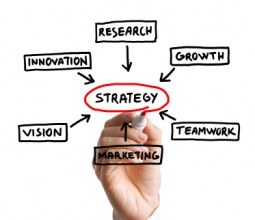7 Step Marketing Plan
 A marketing plan is simply a roadmap of how you are going to introduce people to what you do, to gain visibility with the people who are looking for you right now and guide the focus of your time, energy and resources. As with anything in business, the most important thing you can do is to take action. If you’re creating your marketing plan, and then implementing it, you should begin to see results fairly quickly. Don’t worry that it’s not perfect yet – as long as nobody is harmed in what you’re doing, you can streamline it and make it better later.
A marketing plan is simply a roadmap of how you are going to introduce people to what you do, to gain visibility with the people who are looking for you right now and guide the focus of your time, energy and resources. As with anything in business, the most important thing you can do is to take action. If you’re creating your marketing plan, and then implementing it, you should begin to see results fairly quickly. Don’t worry that it’s not perfect yet – as long as nobody is harmed in what you’re doing, you can streamline it and make it better later.
1. Strategic Positioning
Identify where you want to go, and consider the best way to get there. You’ll need to understand who you are talking to, what problem they are facing and how they can access a solution through you, differentiate yourself by using your ‘secret sauce’ marketing messages, have a sound business model that is monetizable, put marketing tools and a system in place, as well as know your ‘call to action’ points for your potential clients so they know what to do when you reach them.
2. Develop Marketing Tools
Now that you know your business model, who you are serving and how (with your solution), develop the marketing tools that you decided on in step one. Remember that your tools need to attract your prospective client’s attention (cut through all the ‘noise’ of the marketplace), demonstrate and enhance your credibility, and provoke them to take action with you.
3. Generate Leads
Using your marketing tools, put them to work in the areas where your potential clients congregate and/or will find them. Whether online (like article marketing or social media) or offline (like direct mail and networking), your marketing tools / system should result in attracting potential clients. If not, they’re not working for you and it’s time to revisit where your marketing tools / system need to be refined.
4. Follow-Through
Your potential clients may or may not be ready to invest in your solution to address their issue. If they are not ready, you want to make sure you are staying in touch with them. Your follow-through could include anything from sending out an ezine to scheduling a call with them to inviting them to a free teleseminar. The idea is to educate them as to the benefits that they will receive as a result of investing their time and financial resources in your solution. Remember, you can automate this follow-through system. (Note: if you aren’t clear on why they will benefit, or your solution isn’t the best fit for them, the energy of this will be counter-productive and will result in losing these people as potential clients.)
5. Formalize the Relationship
This is the sales closing step, or enrollment step, where your potential client converts into a paying client. If you’ve done the marketing properly, this step should be fairly fluid and easy to achieve. (Frankly, I’ve found that the reasons why this step fails are more about the business owner’s own issues than the system or the potential client! That is the reason why investing in your own development as a business owner is so critical.)
6. Service Enhancements / Profit Multipliers
This is where you continue to serve your clients with additional products and services that help them with various aspects of the issue(s) that they are facing. This builds client loyalty over time, helps you to grow in your expertise, and uplevels your service offerings – all while creating new access points for client engagement and new revenues for you.
7. Refinement
Now that you’ve put all this in motion, every three months evaluate what’s working and what isn’t in growing your business. If something isn’t working, look to see what’s happening and determine if it’s repairable or if it must be replaced with something else.